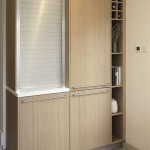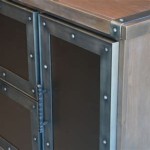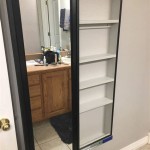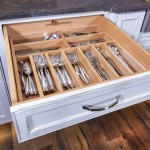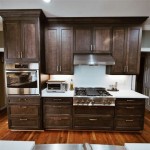Create Storage Space with a Decorative Cabinet in Revit
In Revit, creating a decorative cabinet is a versatile and stylish way to add both storage and aesthetic appeal to your designs. By incorporating these elements into your models, you can enhance the functionality and visual interest of your spaces. Here are some essential aspects to consider when adding a decorative cabinet in Revit:
1. Determine the Cabinet's Purpose and Location:
Identify the intended use of the cabinet to determine the required size, shape, and features. Consider its placement within the room, ensuring it complements the layout and flow of the space.
2. Choose a Cabinet Style and Materials:
Select a cabinet style that harmonizes with the overall design aesthetic. Revit offers a wide range of styles, from traditional to modern, to suit different project requirements. Additionally, specify the materials for the cabinet, such as wood, metal, or glass, to achieve the desired look and functionality.
3. Set Cabinet Dimensions and Configurations:
Define the cabinet's height, width, and depth according to the intended purpose and available space. Utilize Revit's parametric features to adjust dimensions quickly and explore different configurations, such as open shelves, drawers, or doors.
4. Add Doors and Hardware:
Create cabinet doors and specify their swing direction, thickness, and material. Select appropriate hardware, such as knobs or handles, to enhance functionality and add decorative touches.
5. Consider Lighting Integration:
Incorporate lighting elements within or around the cabinet to highlight its contents or create a visually appealing ambiance. Revit allows for the addition of lights, either as individual fixtures or integrated into the cabinet's structure.
6. Apply Finishes and Textures:
Enhance the cabinet's aesthetics by applying finishes and textures to its surfaces. Experiment with different materials, colors, and patterns to create a customized look that complements the surrounding space.
7. Create a Family for Reusability:
For repeated use in future projects, create a parametric family of the decorative cabinet. This allows for easy insertion and customization, saving time and maintaining design consistency.
By following these steps, you can effortlessly incorporate decorative cabinets into your Revit designs, adding both storage and aesthetic value to your projects. These versatile elements enhance the functionality and visual appeal of your spaces, making them truly exceptional.
Elegant Display Cabinet In Revit Free 12 57 Mb Library

Cabinet Storage In Revit Free 184 00 Kb Library

Revit Families Bim Objects Of Cabinets And Storage Free

Wooden Cabinet In Revit Free 212 00 Kb Library

Rd060 How To Make Parametric Modular Kitchen Casework In Revit Part 1 Base Unit Door

Built In Kitchen Cabinets Revit Free 55 70 Mb Library
.png?strip=all)
Four Drawer Filing Cabinet In Revit Free 204 00 Kb Library

Building Revit Family Bar Cabinet Furniture

Modeling Interior Shelves In Revit

Cabinet File Lateral 4 Drawer In Revit Free 196 00 Kb Library
Related Posts

